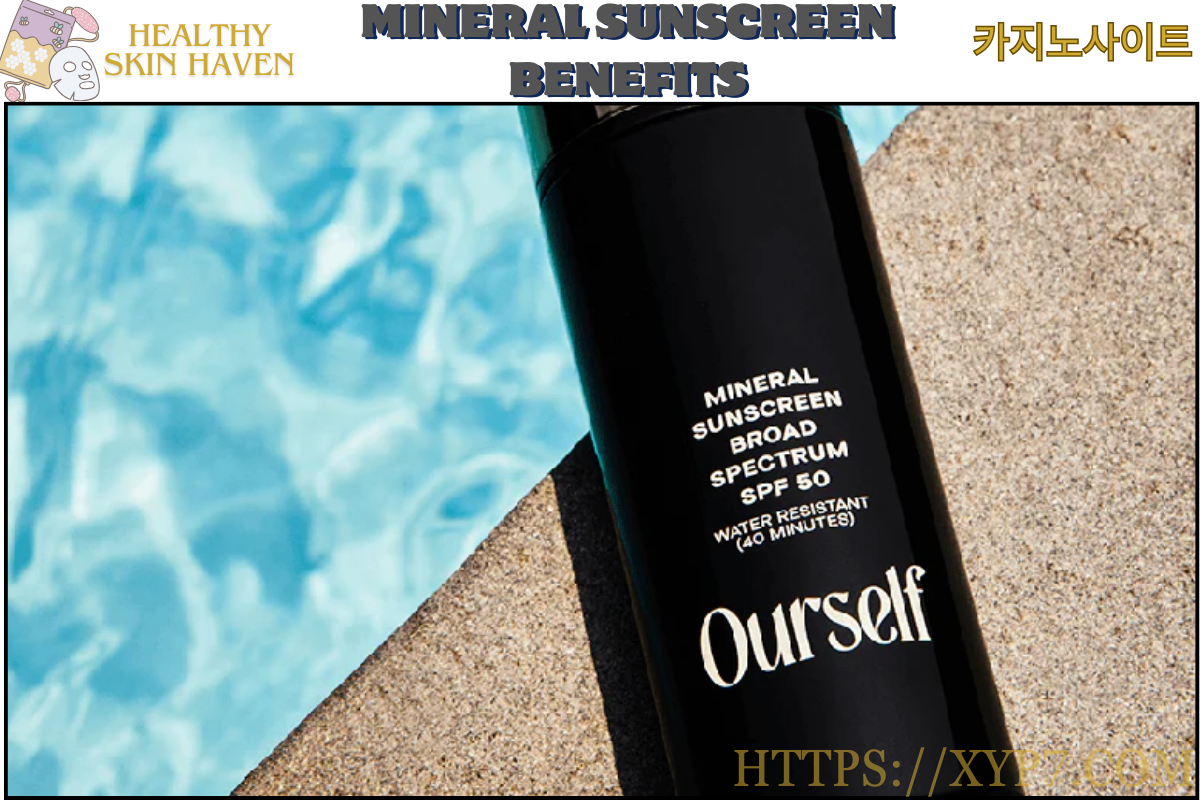Mineral Sunscreen Benefits. Not every sunscreen is created equal.
In general, there are two kinds of sunscreen: “chemical” and “mineral,” but the ways in which they protect you differ significantly.
Which is preferable, chemical or mineral?
RELATED: Benefits and Drawbacks of Different Sunscreen Types

What is a Mineral Sun Screen?
To be clear, when we refer to mineral sunscreen, we mean that it shields you from the sun by using zinc oxide and frequently titanium dioxide as well. Physical sunscreen is another name for mineral sunscreen. These minerals create a physically thin shield on your skin that blocks out the sun’s rays.
What is a Chemical Sun Screen?
Synthetic sunscreen also referred to as “chemical” sunscreen, functions by “neutralizing” or absorbing into your skin the harmful effects of UV radiation. PABAs, oxybenzone, homosalate, methoxycinnamates, and octocrylene are common ingredients found in synthetic sunscreens.
What Advantages Do Mineral Or Physical Sunscreens Offer?
1. There’s No Waiting.
You don’t have to wait for mineral sun screen to protect you because it functions as a reflective barrier right away. Because synthetic sunscreens must first absorb into the skin, they may not function properly for up to thirty minutes.
2. Certain Minerals Have Direct Benefits For The Skin
Skin benefits from zinc oxide. It works wonders for burns and wounds and is a major active ingredient in many skin care products. Including nappy rash creams and acne treatments. It functions as a building block for skin repair in addition to having antibacterial properties. As a result, a zinc oxide sun cream can function as both an active skin care repair cream and a sunscreen. Conversely, synthetic sunscreens don’t provide any extra benefits for the skin.
3. Zinc Oxide is Effective, Offering Wide-Spectrum UV Protection
You receive additional, and very important, two for the price of one UVA and UVB protection when you use zinc oxide sunscreen. It is UVB rays that cause sunburn and damage to the skin’s outermost layers. UVA rays are responsible for skin cancer and early signs of aging, including wrinkles and sun spots.
Chemical sunscreen filters primarily block UVB rays, and to provide the full spectrum of protection. It is frequently necessary to use multiple synthetic sun filters or zinc oxide. Zinc oxide mineral sunscreens are therefore incredibly effective. Look for the terms “full spectrum,” “broad spectrum,” and/or “UVA in a circle” when selecting any sunscreen. This indicates that UVB and UVA radiation are both protected from by the product.
4. Reduced Health Hazards
Chemical sunblocks are absorbed into the body and have been detected in blood, urine, and breast milk samples. Just like a lot of products you put on your skin. While this wouldn’t be a problem in and of itself, the same artificial chemical ingredients found in sun screens have been connected to health issues. For further information, see Dangerous Sunscreen Chemicals To Avoid (And Why!). Research has linked synthetic sunscreen oxybenzone, for instance, to allergies, hormone imbalance, and cell damage.
The majority of these studies are not totally conclusive and are rather recent. To completely comprehend the negative effects of chemical sunscreens. Especially the “cocktail effect” of combining them with other sunscreen filters and skincare additives, more research is required. Until then, no action will be taken to outlaw these chemicals by international regulatory bodies such as the FDA or the EU Council.
On the other hand, organizations that certify products as organic adopt a precautionary principle known as “in doubt, leave it out.” As a result, all synthetic sunscreen filters are prohibited by organic health and beauty guidelines. Since mineral sunscreen filters pose no health risks, only these are permitted.
5. Natural Sunscreens Are More Likely To Have Antioxidants That Are Beneficial
Mineral-based physical sunscreens are usually composed of botanical ingredients, some of which may even come from organic farming. Rich in antioxidant vitamins, these natural and organic plant extracts are just as important as UVA and UVB inhibitors in preventing sun-induced premature aging of the skin. Vitamin-rich plant oils and butters, such as cocoa butter, olive oil, and shea butter, can help scavenge free radicals.
6. Mineral Sunscreen Causes Less Damage to the Environment
Compounds such as oxybenzone have also been connected to adverse environmental effects, such as pollution; data has shown that this chemical can harm coral reefs when it is washed off swimmers (NOAA 2015).
7. Mineral-Based Sunscreens Avoid Skin Irritation and Clogging
Mineral sunscreens are thought by many dermatologists to be less irritating for skin that is sensitive or problematic, better suited for infants, and less likely to aggravate acne or cause contact dermatitis. The minerals are not only non-irritating in and of themselves, but they also reduce the likelihood of an allergic reaction because they remain on the skin’s surface instead of being absorbed.
8. Minerals in Sunscreen Are Photostable
Certain chemical sunscreens, like avobenzone, require the addition of other ingredients because they are highly unstable and degrade in the sun. While this does not imply that all chemical ones degrade, the higher risk indicates that you must rely on the formulator and safety assessor to perform their duties competently.
9. Sunscreen that is applied physically can be worn over makeup.
It’s not ideal to have to reapply sunscreen every two to four hours if you’ve just mastered your go-to makeup look. You can apply mineral sunscreen in powder form, either loose or pressed, over foundation and reapply it as often as you like 카지노사이트.
